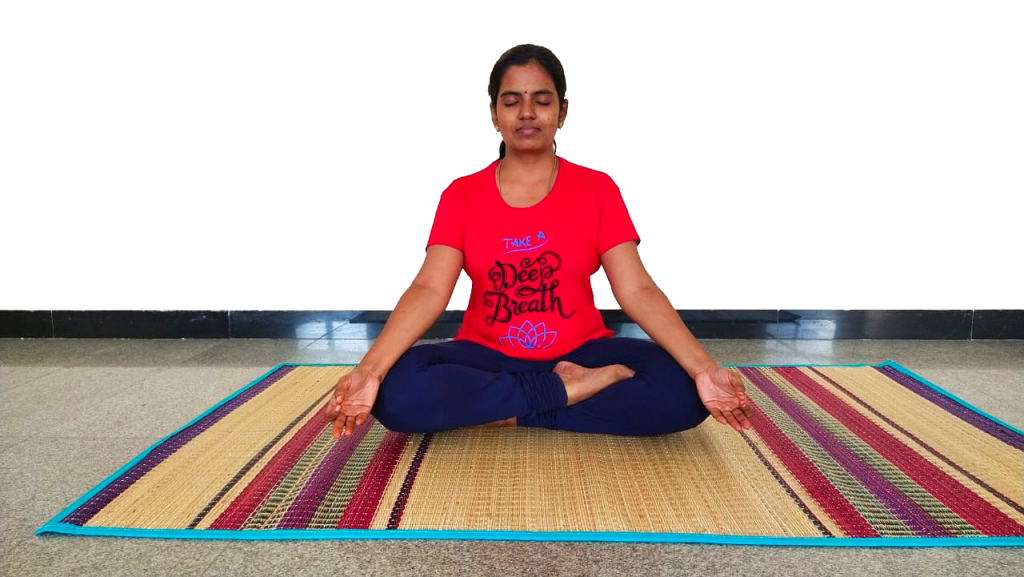– Shri N. Elumalai, PhD Scholar (Yoga Science), MAHER
In Sanskrit, su means ‘good’, asti means ‘exist’ or ‘to be’ or ‘existence’, ka means ‘to make’ and asana means ‘pose’. It is a basic seated yoga asana often used in meditation, particularly when the yogi has difficulty with Siddhasana and Padmasana. Traditionally, it is believed to open the flow of prana energy between the Muladhara (Root) and Ajna (Third Eye) Chakras. In this position, the legs attain the shape of the Swastika and the position of the body is stabilized. Regular practice with a straight spine and palms in Gyan Mudra is known to activate the Ajna Chakra, which metaphorically located between the eyebrows, is the center of perception, consciousness, and intuition.
STEPS
To start, locate a calm place and sit comfortably on the mat.
Now, come in Dandasana (Staff pose), spreading both the legs in front of you and making them at a distance of 1.5 feet.
Now, bend your left leg and place the sole of the left leg against the inner thigh of the right leg.
After this, bend your right leg and place the right foot in the space between the left thigh and calf muscles. In this, remember that the right heel must not touch the pubis.
Your knees have to firmly touch the floor. Keep the body and back straight and also keep the head and neck in one line. Make adjustments to yourself to feel better.
Place your hands on your knees in a Mudra such as Jnana or Chin.
Keep your spine straight at all times during this pose and not overextended. Take control of your breath and breathe slowly and normally.
You can also focus on the tip of the nose or the center of the eyebrow, depending on the type of meditation technique. Make sure your whole body is relaxed.
Initially try to sit in this meditation posture for 5 to 15 minutes, increase your sitting time day by day.
Beginners may face problems in achieving this yoga pose perfectly due to the tight muscles of the hip. It is advisable to place a folded blanket under the sitting bone.
BENEFITS
- It stretches the spine, calves, hips and hamstrings.
- It reduces back pain and improves flexibility.
- It strengthens hip, knee, and thigh muscles.
- Beneficial for people with retention in the legs.
- Very helpful for individuals suffering from varicose veins or aching leg muscles.
- Improves digestive health and rejuvenate of the nervous system.
- It also helps to reduce stress.
- Regular practice improves focus, concentration and memory.
- Being an excellent easy asana to perform can be done by all, from child to elder.
- This asana is also used for Dhyana (meditation) and Pranayama (breath) exercises.
- It is very useful to boost immunity.
- It helps to get rid of addiction.
- Long duration of its practice activates the Muladhara (Root) Chakra along with Ajna (Third Eye) Chakra.
- It brings smoothness in the eyes and also reduces eye strain.
- This asana helps in building confidence.
- It also helps to give calmness to the mind.
LIMITATIONS
People who are suffering from sciatica and sacral infections, knee pain or injury should avoid this asana.
People with arthritis of the knees, hips and feet should avoid sitting on the floor.
If the knees are unable to touch the floor, pillows should be used to support them. Make sure not to stretch too much or touch the floor forcibly.
In case of lordosis and kyphosis, you should rest their back against the wall. You can also use yoga blocks in order to straight back by placing it between your scapula.
